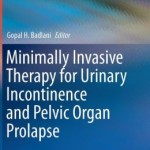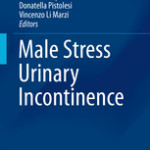 By
By
- Lewis Chan, Senior Staff Specialist, Department of Urology, Concord Repatriation General Hospital, Sydney, Australia, Clinical Associate Professor, Sydney Medical School, University of Sydney, Sydney, Australia
- Vincent Tse, MB MS, FRACS (Urol), Consultant Urologist, Concord Repatriation General Hospital, Sydney, Australia, Clinical Senior Lecturer, University of Sydney, Sydney, Australia
Multidisciplinary Care of Urinary Incontinence – a Handbook for Health Professionals effectively uses a multidisciplinary approach to assist health professionals in their care of patients with urinary incontinence. It is recognized that the best outcomes are achieved by a multidisciplinary team approach especially with regard to complex cases and care of the elderly.
This book is written by expert authors from around the world with a wealth of experience in conducting clinics on pelvic floor, aged care voiding dysfunction and neuro-rehabilitation. The text is illustrated throughout and contains case-studies with input and practical tips from the different health disciplines at each point. Each chapter concludes with a list of seminal publications and web-based resources to assist the reader in the clinical environment.
Multidisciplinary Care of Urinary Incontinence – a Handbook for Health Professionals is of benefit to medical and allied health disciplines including family physicians, nurses, urologists, gynecologists, physiotherapists, geriatricians, neurologists and rehabilitation specialists.
Key Features
- The use of case studies of common conditions illustrates multidisciplinary concepts in care and allows readers to identify with the type of patients they see and the role of the various disciplines in caring for the patient during the case
- Chapters, rather than being ‘topic oriented’, are organized based on the common types of patients presented to the health care professional. This means there is input by different disciplines at various steps of the case (i.e. nursing, physiotherapy, medical, surgical, geriatric and rehab etc.) rather than each discipline writing a separate chapter. In this way readers can see the specific role/ input of the various health professionals in caring for the patient during different stages of the patient’s management
- The inclusion of simple practice points and tips in table form at strategic steps assists the reader to provide hands-on management of the patient with these ‘tricks of the trade’











